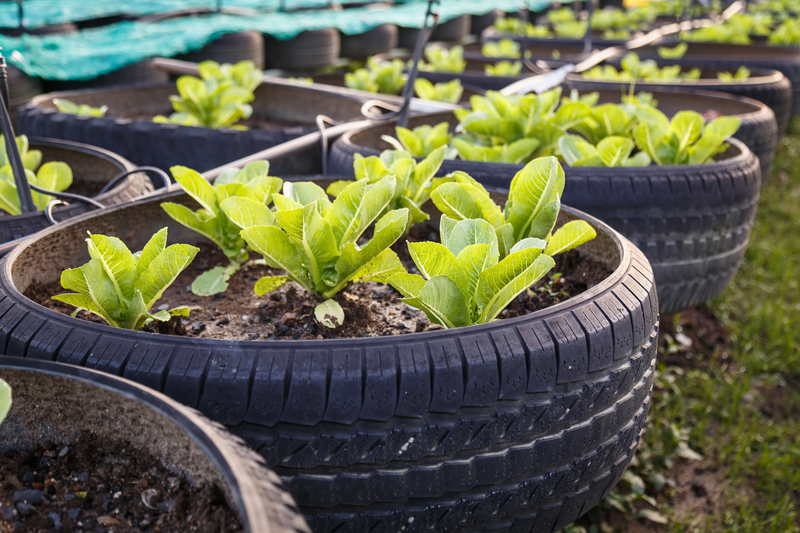How to Safely Dispose of PPE Without Harming Wildlife
The COVID-19 pandemic has made face masks, gloves, and personal protective equipment (PPE) a daily necessity. While these items help protect us, their improper disposal poses a significant threat to the environment and wildlife. In this comprehensive guide, you'll discover how to safely dispose of PPE without harming wildlife, why it's critical, and what steps you can take to protect our planet.

Why Is Responsible PPE Disposal Important?
The surge in PPE use has led to an explosion of litter worldwide. PPE litter -- especially masks and gloves made from synthetic materials -- is now a common sight in parks, rivers, beaches, and streets. But why is this a problem?
- Wildlife Hazard: Animals may mistake PPE for food or become entangled, leading to injury or death.
- Environmental Pollution: Most PPE is made from plastics, taking decades or centuries to break down, contributing to microplastic pollution.
- Pathogen Spread: Used equipment can carry germs, posing a health risk to humans and animals alike.
Proper PPE disposal protects not only human lives but also the delicate balance of our ecosystems.
PPE Types and Their Environmental Impact
Face Masks
- Single-use surgical masks: Made from polypropylene, a plastic that does not biodegrade easily.
- Reusable cloth masks: While less damaging, improper washing or disposal can still be problematic.
Gloves
- Latex gloves: Can take years to decompose; not always biodegradable.
- Nitrile/vinyl gloves: Synthetic materials, persistent in the environment.
Other PPE
- Face shields, gowns, and shoe covers are usually plastic-based and have similar environmental risks if discarded irresponsibly.
How Improper PPE Disposal Harms Wildlife
Improper discarding of PPE has already left a visible mark on wildlife habitats worldwide. Here's how:
- Ingestion: Birds, turtles, and marine animals often eat mask straps or glove fragments mistaking them for prey, causing digestive blockages or poisoning.
- Entanglement: Animals get caught in mask ear loops or glove fingers, restricting movement and leading to injury or death.
- Pollution: As PPE breaks down, it adds to microplastic pollution, entering food chains and harming species at all levels.
According to environmental organizations, there's been a drastic increase in animals found entangled in masks or having ingested latex gloves since 2020. This alarming trend underlines the importance of learning how to dispose of face masks and gloves responsibly, without endangering wildlife.
Safe PPE Disposal: A Step-by-Step Guide
To protect both the environment and wild species, it's crucial to follow simple yet effective steps when getting rid of used PPE. Here's how you can make sure your used face masks, gloves, and other protective equipment do not harm wildlife.
Step 1: Remove PPE Safely
- Wash or sanitize your hands before and after handling used PPE.
- Carefully remove gloves by grasping the outside near the wrist and pulling away from your hand, turning them inside-out as you remove them.
- For masks, avoid touching the front; remove by the ear loops or ties only.
Step 2: Prepare PPE for Disposal
- Never discard PPE on the ground, in parks, beaches, or waterways.
- Cut the ear loops of face masks and the fingers of gloves with scissors before disposing. This step prevents wildlife entanglement.
- If possible, first store used PPE in a sealed bag to contain contaminants.
Step 3: Dispose of PPE Responsibly
- Place used PPE in a dedicated bin lined with a plastic bag -- do not put into recycling unless your local facility specifically accepts PPE.
- Consider writing "non-recyclable waste" or similar on the bag to notify waste handlers.
- Make sure bins are closed and not overflowing -- animals commonly access open trash for food or bedding and may come into contact with used PPE.
Step 4: Community & Public Area Actions
- Support PPE waste collection initiatives in your community, such as specialized bins or return schemes at pharmacies.
- If you organize outdoor activities or frequent public spaces, bring a spare bag to collect and safely dispose of any discarded PPE you find.
- Report overflowing public PPE bins to the relevant local authorities for prompt attention.
Discarding Face Masks and Gloves: What NOT To Do
Here are some common mistakes to avoid when disposing of PPE to reduce harm to the environment and wildlife:
- Do NOT flush masks or gloves down toilets -- this is a leading cause of marine pollution and sewer blockages.
- Do NOT burn PPE at home -- burning plastics creates toxic fumes dangerous to humans and animals.
- Do NOT re-use single-use PPE or "sanitize" it with home methods if contaminated -- this increases the risk to both people and animals.
- Never drop PPE on the ground, in parking lots, or public spaces, as wind and rain quickly carry these items into nature and waterways.
Recycling and Disposal Programs: What's Available?
While many areas do not allow PPE in regular recycling due to contamination and mixed materials, there are innovative programs taking shape:
- PPE take-back boxes: Some pharmacies and health providers offer collection bins for mask and glove disposal.
- Specialty recyclers (like TerraCycle): A few companies provide mail-in boxes for non-recyclable PPE, breaking it down for energy or raw material recovery.
- Community cleanup groups: Volunteer organizations regularly remove PPE litter from beaches, parks, and urban areas.
Check with your local authority or waste management company for PPE recycling and disposal options in your area.
How You Can Reduce PPE Waste at the Source
The safest PPE for wildlife is the one you never throw away. Here are ways to lower your PPE footprint:
1. Choose Reusable Masks Whenever Possible
- Reusable masks -- made from cotton or polyester blends -- can be washed and re-used, cutting down on single-use waste.
- Make sure to follow health guidelines for mask maintenance and replacement.
2. Opt for Biodegradable PPE
- A growing number of companies now manufacture biodegradable masks and gloves from natural fibers like bamboo or paper, which break down more quickly in the environment.
- Only choose certified compostable products, and dispose of them in proper compost systems if available.
3. Use Only as Much PPE as Needed
- Follow your local health rules and guidelines: avoid overuse of disposable gloves in non-medical settings.
- Practice frequent handwashing as a greener alternative to wearing gloves everywhere.
How You Can Protect Wildlife from PPE Harm
It only takes small, consistent actions to reduce the risk of PPE endangering wildlife:
- Educate family and friends about the impact of littered PPE and share safe disposal tips.
- Participate in community cleanup efforts to remove PPE debris from local habitats.
- Contact local authorities to request more PPE-specific bins in public spaces.
- Support environmental organizations working to mitigate pandemic pollution.
The Role of Law and Policy in PPE Waste Management
Governments and companies play a crucial role in minimizing the environmental dangers presented by disposable PPE.
Examples of Effective Measures:
- Implementing fines for PPE littering
- Providing clear labeling and instructions on PPE packaging about proper disposal
- Investing in research and development of biodegradable or reusable PPE products
- Raising awareness with public campaigns about the risks of improper PPE disposal to wildlife

FAQs on How to Safely Dispose of PPE Without Harming Wildlife
1. Can I recycle my used face mask or latex gloves at home?
In general, used masks and gloves are not accepted in home recycling bins due to contamination risks. Instead, place them in your regular garbage after preparing them safely.
2. Should I compost biodegradable PPE?
Only compost certified biodegradable PPE in a suitable facility. Most municipal composting services do not yet accept PPE. Check local guidelines.
3. Is there a preferred way to pick up discarded PPE I find outside?
Yes! Always wear gloves or use a litter-picker. Place the PPE directly into a sealed bag and wash your hands thoroughly afterward.
4. Are cloth masks safer for wildlife?
Reusable cloth masks produce less waste, reducing harm to animals. Always dispose of worn-out cloth masks securely in your regular trash after cutting up straps.
5. How can I help if I see an animal entangled in PPE?
Contact your local animal rescue organization or wildlife rehabilitator for assistance. Attempting to free a distressed animal yourself can be dangerous.
Conclusion: Better PPE Disposal, Safer Wildlife
The proliferation of disposable masks, gloves, and similar items is more than just a health issue -- it is an environmental challenge with direct consequences for wildlife. By learning how to safely dispose of PPE without harming wildlife and encouraging others to do the same, you make a real difference.
- Always dispose of PPE in a sealed, lidded bin
- Cut or tear straps and loops to prevent animal entanglement
- Choose reusable options when possible
- Join or support local cleanup efforts
Individually and together, our actions matter. Let's protect ourselves without sacrificing the safety of the animals and ecosystems that share our planet.
